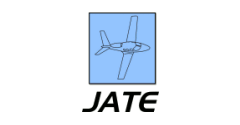Abstract
Hybrid buoyant aircraft are new to the arena of air travel. They have the potential to boost the industry by leveraging new emerging lighter-than-air (LTA) and heavier-than-air (HTA) technologies. Hybrid buoyant aircraft are possible substitutes for jet and turbo-propeller aircraft currently utilized in aviation, and this manuscript is a country-specific (Malaysia) analysis to determine their potential market, assessing the tourism, business, agricultural, and airport transfer needs of such vehicles. A political, economic, social, and technological factors (PEST) analysis was also conducted to determine the impact of PEST parameters on the development of buoyant aircraft and to assess all existing problems of short takeoff and landing (STOL) aircraft. Hybrid buoyant aircraft will not only result in reduction of transportation costs, but will also improve the economic conditions of the region. New airworthiness regulations can lead to greater levels of competition in the development of hybrid buoyant aircraft.
Recommended Citation
Haque, Anwar ul; Asrar, Waqar; Ali Omar, Ashraf; Sulaeman, Erwin; and Mohamed Ali, Jaffar Syed
(2017)
"Hybrid Buoyant Aircraft: Future STOL Aircraft for Interconnectivity of the Malaysian Islands,"
Journal of Aviation Technology and Engineering:
Vol. 6:
Iss.
2, Article 5.
Available at: https://doi.org/10.7771/2159-6670.1138
Included in
Aeronautical Vehicles Commons, Management and Operations Commons, Other Aerospace Engineering Commons


